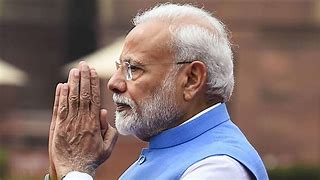World
Pakistan quake relief operations continue

Islamabad: Relief operation are in full swing in areas of Pakistan which were hit by the 7.5 magnitude earthquake on Monday, Radio Pakistan reported on Friday.
On the directives of Prime Minister Nawaz Sharif, relief goods have been airdropped in Khyber Pakhtunkhwa’s upper Kohistan valleys.
More than 7,500 tents, 12,000 blankets, 2,000 mats and over 11,000 food packages have been distributed among the affected people so far.
Pakistan’s Punjab provincial government has also sent 50 relief trucks to different areas of Khyber Pakhtunkhwa.
Two Pakistan Air Force (PAF) C-130 aircraft carrying relief goods for the earthquake affected areas landed at Chitral on Friday. One of planes airlifted approximately 18,000 pounds of dry ration which was donated by the PAF.
The Khyber Pakhtunkhwa government has released 3 billion Pakistani rupees (about $28 million) for relief and rehabilitation activities in earthquake affected areas.
So far, the toll has risen to 272, the National Disaster Management Authority (NDMA) of Pakistan said on Thursday.
According to the NDMA, at least 2,123 people were injured and 25,364 houses damaged in the earthquake which hit the country at 2.09 p.m. Its epicentre was determined in Hindu Kush mountains along the Pakistan-Afghanistan border. The quake was felt in most parts of Pakistan but caused more damage in the northwestern mountainous parts of the country.
The Pakistan meteorological department said that after Monday’s quake, a series of aftershocks ranging from 2.5 to 5.3 magnitude have been recorded in the country.
World
Lockdowns in China Force Urban Communities to Defy Censorship and Vent Frustration Online

Shanghai’s rich middle class is leading a wave of online dissent over the strict and prolonged lockdowns imposed in various parts of the country. Chinese internet censorship is struggling as patience is wearing thin in many urban centers, coming up with creative forms of online protests.
Social Media Posts Revealing Lockdown Tension in Shanghai
Drawn-out lockdowns are nothing new in China as authorities insist with the nation’s zero-Covid policy since the start of the pandemic. Currently over This time around, however, metropolitan areas like Shanghai are increasingly difficult to keep quiet, given that its more than 25 million residents have seen weeks of total isolation along with food shortages and many other service interruptions.
Dozens of towns and reportedly over 300 million Chinese citizens have been affected by lockdowns of different severity. As expected, urban netizens have been most outspoken over their difficulties by finding creative ways to get around state censorship and bans placed on topics, news comments and spontaneous campaigns.
Shanghai residents have been using mobile proxies and hijacking seemingly unrelated hashtags to talk about healthcare issues, delivery failures and the overall severity of their situation. The “positive energy” that the Chinese government wants to transmit during the recent prolonged series of lockdowns does not come naturally to those counting food supplies and online censors are working hard to filter words, trending topics and undesired social media sharing.
WeChat groups and message threads are under constant monitoring. Posts questioning the zero-Covid approach have been quickly deleted, including by leading Chinese health experts like Dr. Zhong Nanshan. Video footage is soon censored and protests and investigations are quickly made to disappear.
Where this has not worked, officials have exposed banners with warnings and outright threats like “watch your own mouth or face punishment”, while drones have been patrolling the city skies. Yet, if anything, this has led to further tensions and unspoken confrontation with Shanghai’s educated and affluent middle class.
Creative Online Solutions Harnessing Civic Energy
Announcements by Chinese social media that they would be publishing the IP addresses of users who “spread rumors” have not helped either. Tech industry research has shown that much of Asia’s tech-savvy population has a habit of using mobile proxies and other privacy tools, quickly finding workarounds to browse the internet freely and talk to the world about the hottest topics.
The sheer volume of forbidden posts is already a challenge for the very censorship system, experts explain. Unable to track all trending hashtags, state workers overlook topics that speak about the US, Ukraine or other popular news. Linking human rights elsewhere to their situation, Chinese online dissidents establish their informal channels and “hijack” the conversation to share personal or publicly relevant information about the Covid suppression in their town.
Sarcastic and satirical posts still dominate. Others hope to evade the censors by replacing words from famous poems or the national anthem. One thing is certain – social media, when harnessed with the right creativity, has proven its ability to mount pressure on the government in even some of the most strictly controlled tech environments like China.























